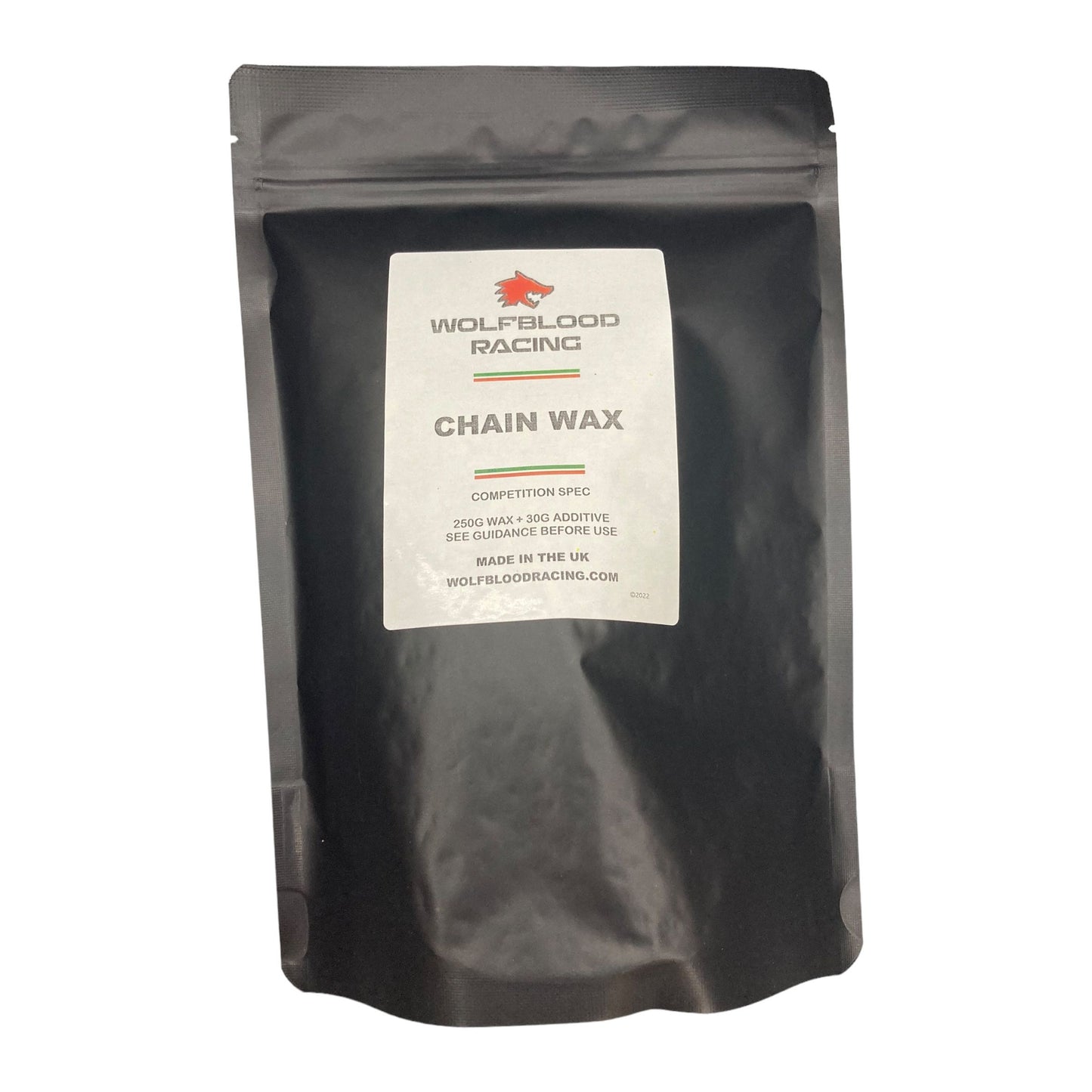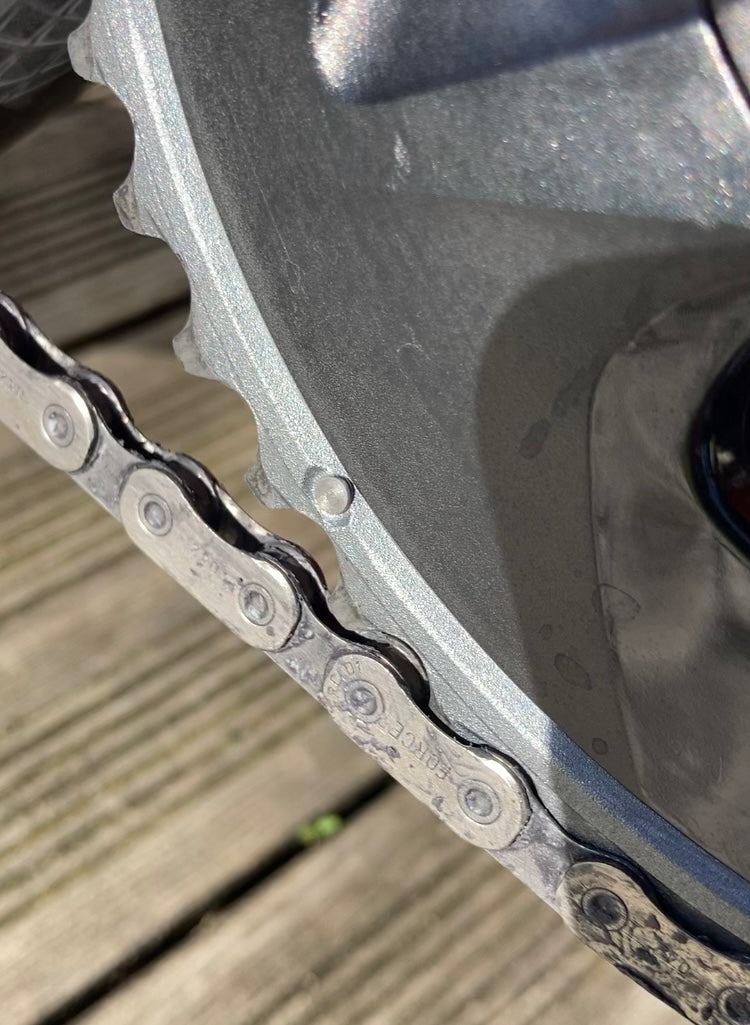1
/
of
4
WBR Chain Wax 250g + 30g - Microcrystalline wax with WS2 and PTFE
WBR Chain Wax 250g + 30g - Microcrystalline wax with WS2 and PTFE
Regular price
£19.99 GBP
Regular price
Sale price
£19.99 GBP
Unit price
/
per
Taxes included.
Couldn't load pickup availability
WBR Chain Wax
250g Microcrystalline Wax with 30g Wolfblood Racing Additive Powder
250g Microcrystalline Wax with 30g Wolfblood Racing Additive Powder
Our ultimate microcrystalline wax with a fine uniform crystalline structure provides a thin, flexible, tough and consistent coating providing enhanced protection from wear and corrosion. Plus a sachet of the ultimate wax additive, fully loaded with high dispersion super fine PTFE and WS2 - the king of lubricants.
- Competition Specification - demand the best
- Long lasting - reapply at around 1000k - ideal for endurance specialists
- Increased transmission of power - gain watts at the wheel
- Corrosion resistance even in the toughest conditions
- Prolongs chain, cassette, derailleur and crank component life
Chain waxing significantly increases efficiency and durability over other lube types. Especially good for high performance in tough conditions waxing protects against dust, mud, water and corrosion while saving watts of power. Wax protection lasts hundreds of miles and weeks of abuse.
This means on road or off track, commute or competition, waxing saves in the long term both in wear and energy.
Tungsten (Wolfram) Disulphide WS2 is an exceptionally stable and lubricious compound. Originally developed for space probes it offers the best 'real world' performance of any dry lubricant type. Combined with PTFE this gives enhanced durability and performance.
Tungsten (Wolfram) Disulphide WS2 is an exceptionally stable and lubricious compound. Originally developed for space probes it offers the best 'real world' performance of any dry lubricant type. Combined with PTFE this gives enhanced durability and performance.
Usage Guide
Equipment:
Gloves and eye protection.
Good work area without sensitive carpets fabrics etc.
WBR Cycle chain additive powder!
New or very good condition cycle chain
Degreaser
Cleaning Solvent and containers
Wax heating pot / crock pot
Rod type thermometer
Hand whisk
500g of wax (paraffin is easiest/cheapest but be sure to get high quality)
Wire (not insulated!)
Method for use:
Remove and clean chain throughly-
We suggest once in degreaser/detergent and then three good rinses in solvent. The last should be in methylated spirits or Isopropyl Alcohol as these will leave the least residue. The cleaner the chain the better the result. Allow to dry.
Heat the wax-
A dedicated cosmetic wax heater is the best option. Slow cookers works ok but is more difficult to regulate the heat. Another note is that dedicated wax heaters typically have Teflon coated pots that are much easier to clean than the ceramic slow cooker type.
Melting the wax can be slow! Expect even granulated wax to take quite some time to melt completely. Also you don't want to get it too hot, look to keep the wax temperature as low as it can be while fully liquid. This depends on the wax type and amounts stearic acid that has been added, usually between 50 and 70 degrees C.
Prepare the chain:
Take the clean chain and thread through a piece of wire (coat hanger wire is best) so that it fits easily into the pot. ideally you want it so you can fit it all on the bottom of the pot, or as close to as possible.
Mix in the additive:
Slowly add in the wax additive powder, try not to create dust. Stir in throughly. once all the powder is wetted we use a hand whisk to mix in. The powder will tend to sink, especially if the wax is very hot.
Coating the chain:
Lower the chain into the wax and agitate to get the wax into the rollers and pins. The longer and more thorough you are the better the result. Imagine you are trying to open up every link and force the wax, PTFE and WS2 onto every surface. We tend to shake it for minutes leave it for a few and repeat until we get very very fed up. We try and flip the chain over a few times in the process.
Taking the chain out:
The technique here is pretty important as you want to turn off the heat and then take the chain out before the wax starts to congeal. Too soon and the wax will tend to run out of the links, too slow and the chain will have excess wax on it. A thin coating is perfect.
You can scrape or brush excess wax off, but if you can get a nice uniform thin coating it will protect the chain better and saves wax. Hang the chain over the wax pot if possible.
Breaking the Chain in:
Getting rid of the excess can be quite a long process. The normal technique of ‘breaking’ a waxed chain around a rod does not work as well with MC wax as it is much tougher and more flexible. So just do a few runs around a rod (wooden broom handle or similar). Then put straight on the bike and run without load by hand - stopping and removing excess wax build up from the derailleur as it gathers. This can take several minutes, but it is important, at this stage it is quite sticky and buildup needs to come off. A stiff bristle brush and fingers is the best we have come up with to help removing the excess but it is not a quick or easy process. Once the rate of build up slows down then the bike may be ridden to "bed in” the chain. Again looking out for build up becoming excessive usually noticeable mostly at the derailleur. A several km is needed at least to be done, depending on how much excess wax there is from the dip.
The pay off is once it is once it is down to a very fine coat with no more excess the chain is very quiet and smooth with exceptionally low wear rates, even in bad conditions for hundreds of km. It is about getting the layer thin, the wax will stop anything getting into the rollers and will keep the PTFE and WS2 where it needs to be. Microcrystalline is much better than standard waxes in terms of longevity and wear rates, which in turn reflects the lower levels of friction.
Clean up: Wax can be cleaned up by scraping, stiff brushing or with acetone/nail varnish remover, but ideally you didn't make a mess in the first place. Our Dipwash is the best wax remover we have found.
Share








